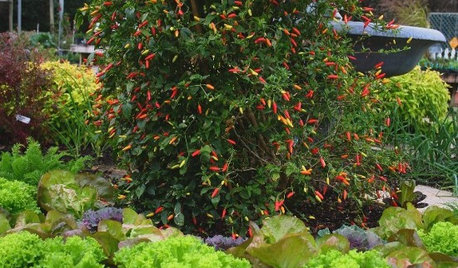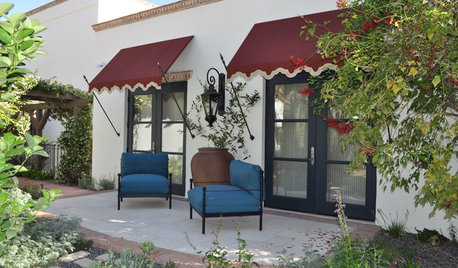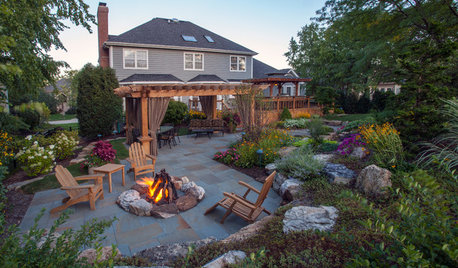Are you planning for next summer's heat wave?
barton
17 years ago
Related Stories

EDIBLE GARDENS6 Summer Edibles That Can Really Take the Heat
When garden temperatures soar, these herbs and vegetables rise to the challenge
Full Story
LIFECool Architecture for Hot Summers
Sun-repelling roofs, shades, windows and the natural flow of air can help your home weather heat waves
Full Story
GREAT HOME PROJECTSHow to Add a Radiant Heat System
Enjoy comfy, consistent temperatures and maybe even energy savings with hydronic heating and cooling
Full Story
GREEN BUILDINGInsulation Basics: Heat, R-Value and the Building Envelope
Learn how heat moves through a home and the materials that can stop it, to make sure your insulation is as effective as you think
Full Story
LIFERetirement Reinvention: Boomers Plot Their Next Big Move
Choosing a place to settle in for the golden years? You're not alone. Where boomers are going and what it might look like
Full Story
FLOORSIs Radiant Heating or Cooling Right for You?
Questions to ask before you go for one of these temperature systems in your floors or walls (yes, walls)
Full Story
BATHROOM DESIGNWarm Up Your Bathroom With Heated Floors
If your bathroom floor is leaving you cold, try warming up to an electric heating system
Full Story
GARDENING AND LANDSCAPING3 Ways to Bring the Heat to Outdoor Living Spaces
Here’s what to know about surviving winter’s bite with an outdoor fireplace, fire pit or heat lamp
Full Story
FLOORSWhat to Ask When Considering Heated Floors
These questions can help you decide if radiant floor heating is right for you — and what your options are
Full Story
FLOORSFloors Warm Up to Radiant Heat
Toasty toes and money saved are just two benefits of radiant heat under your concrete, wood or tile floors
Full Story


wolflover
bartonOriginal Author
Related Discussions
Weather pattern dead: heat wave next?
Q
Heat wave in CA! Tomato ?
Q
Extreme heat waves... cause for?
Q
if you just have to keep ordering in the heat of summer
Q
susanlynne48
hedgwytch
sheepie58
okprairie
bartonOriginal Author
susanlynne48
bartonOriginal Author
rjj1
rjj1
Macmex
susanlynne48
bartonOriginal Author
susanlynne48
bartonOriginal Author
susanlynne48
okiegardener
bartonOriginal Author
okprairie
susanlynne48
dyanna
bakedbeans
Macmex
rjj1
bakedbeans
conrack50
susanlynne48
jimthestonemaker
susanlynne48
Aunt_Net
susanlynne48
jennsgarden
susanlynne48
Okiedawn OK Zone 7
susanlynne48
Okiedawn OK Zone 7
susanlynne48